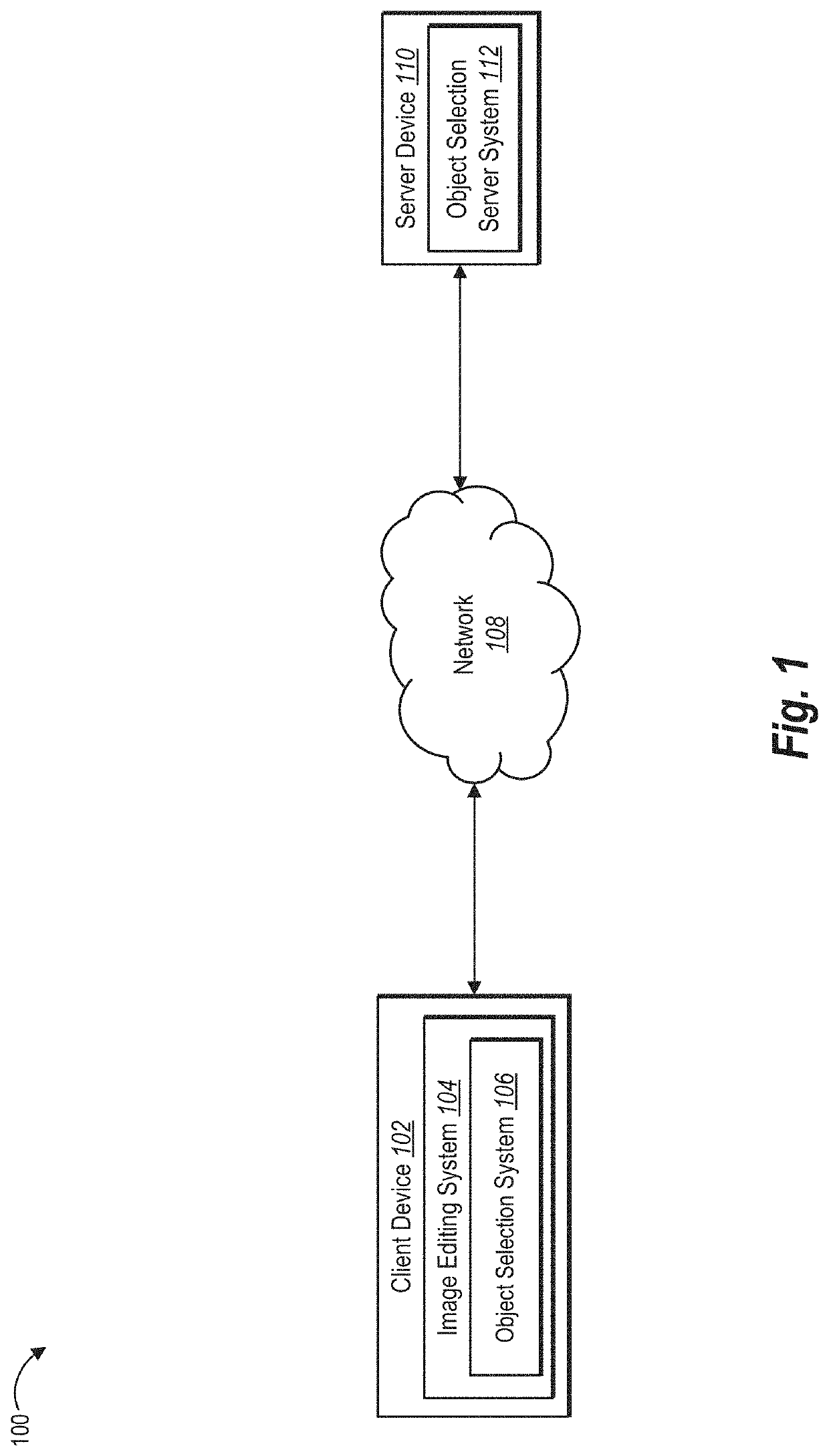Utilizing natural language processing and multiple object detection models to automatically select objects in images
a technology of object detection and natural language processing, applied in the field of using natural language processing and multiple object detection models to automatically select objects in images, can solve the problems of inability to recognize the term, many conventional systems have limited functionality in their ability to select objects, and many conventional systems have a number of problems in relation to flexibility, accuracy and efficiency of operation, so as to achieve accurate detection
- Summary
- Abstract
- Description
- Claims
- Application Information
AI Technical Summary
Benefits of technology
Problems solved by technology
Method used
Image
Examples
Embodiment Construction
[0029]This disclosure describes one or more implementations of an object selection system that accurately detects and automatically selects user-requested objects (e.g., query objects) in a digital image. In particular, in one or more implementations, the object selection system utilizes one or more natural language processing tools to identify object terms and relationships within a natural language object selection query. Additionally, the object selection system can build and update an object selection pipeline to select a requested query object from among more or more query objects indicated in the natural language object selection query. Further, the object selection system can add, update, or replace portions of the object selection pipeline to improve the overall accuracy and efficiency of automatic object selection within an image.
[0030]As an overview, the object selection system can generate and utilize an object selection pipeline to detect objects within a query string (i...
PUM
 Login to View More
Login to View More Abstract
Description
Claims
Application Information
 Login to View More
Login to View More - R&D
- Intellectual Property
- Life Sciences
- Materials
- Tech Scout
- Unparalleled Data Quality
- Higher Quality Content
- 60% Fewer Hallucinations
Browse by: Latest US Patents, China's latest patents, Technical Efficacy Thesaurus, Application Domain, Technology Topic, Popular Technical Reports.
© 2025 PatSnap. All rights reserved.Legal|Privacy policy|Modern Slavery Act Transparency Statement|Sitemap|About US| Contact US: help@patsnap.com



